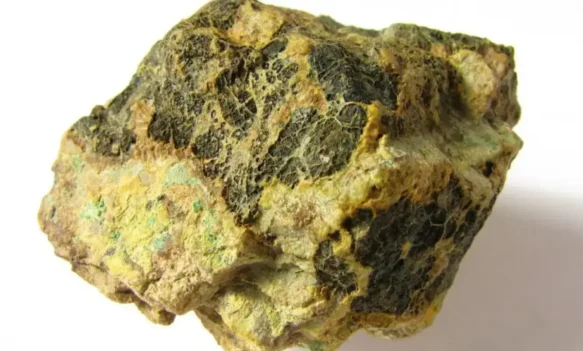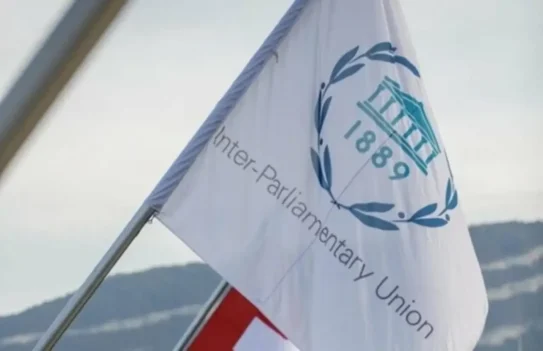When Nepal’s Prime Minister KP Sharma Oli returned from a “triumphant” visit to Beijing in early September, the atmosphere in Kathmandu’s corridors of power seemed calm. All seemed well in the country’s political circles. Oli’s administration appeared impervious to any threats. The ruling coalition led by Oli’s Communist Party of Nepal (Unified Marxist and Leninist) had weathered internal dissent before. Yet, within a week of Oli’s return, the streets erupted.
Thousands of young Nepalis, all in their early twenties, and all native to this internet generation with little tolerance for corruption and the stifling old system, poured out on to the streets. Their uprising came to be called “Gen Z Revolt” and began with rage against a rapidly hardline administration that sought to ban all forms of social media, curb free speech, and increase state surveillance under the guise of a new cyber law. Just in a matter of a couple of days, this uprising toppled Oli’s government, something which neither Nepalis nor China would have predicted.
In fact, for Beijing, it was a jolt.
Beijing’s unfinished experiment
China had been preparing Nepal’s political scene for almost a decade to facilitate “stability” in supportive hands. Its long-term strategy had a dual aim: securing Tibetan security and advancing the Belt and Road Initiative (BRI) vision in South Asia.
Since 2015, Chinese leaders and Communist Party functionaries have heavily invested in Nepal’s left-oriented environment: every year, thousands of Nepali politicians, journalists, and intellectuals have been invited to China for “political training and ideological exchanges.” The strategy was to build a leadership class that would perceive China’s one-party rule not merely as a restrictive straitjacket but instead as “orderly governance.”
This paid off for Beijing in 2017, when Nepal’s two largest communist parties, UML and Maoist Centre, merged to create a dominant party. The party won landslide elections with a nearly two-thirds majority, heralding a golden era for China’s Himalayan policy. In this period, Nepal signed almost two dozen agreements with China, including a 2019 declaration on a ”Strategic Partnership of Cooperation,” which cemented Nepal’s position with China in terms of ”everlasting friendship.”
However, in 2025, the Gen Z movement changed the script.
Historically speaking, almost all political movements in Nepal have been led or have been associated with communist elements, ranging from the 1990 People’s Movement to the Maoist insurgency. The Gen Z uprising defied this tradition. It was a spontaneous, grass-roots unrest that had no leadership and no clear ideological footing.
“Young protesters didn’t rally under the hammer and sickle. They marched under slogans of democracy, transparency, accountability, and digital freedom. Their targets weren’t just individual politicians but the entire system of loot, patronage and control that had calcified Nepal’s politics since 2005/06,” notes Vijay Kant Karna, Executive Chairperson of the Centre for Social Inclusion and Foreign Policy (CESIF) and Nepal’s former ambassador to Denmark.
Analysts point out that the Gen Z uprising was a protest against the old left itself, and by extension, against the political culture which China had been quietly fostering.
“China must have been shocked, I think, explains Karn, “It has invested heavily in left party unity in Nepal, but I don’t think they saw that this frustration is inter-generational and not ideological. The streets don’t speak the language of Marx or Mao anymore — the language is now that of memes and freedom.”
Indeed, the symbolism was powerful. Where China’s model embraced control, this Gen Z revolution celebrated defiance and rebellion. When Oli’s government — a close ally of Beijing — shut down social media platforms, it triggered the very rebellion that ended his rule.
Tibet: China’s perpetual concern
At the root of China’s shock is a deeper and constant concern: Tibet.
For Beijing, the Tibetan issue is the most delicate strand in Nepali border policy. Each change in Nepali politics is scrutinized for how it might impinge on Tibetan stability. China has long been concerned about Tibetan unrest or democracy spreading to Nepal, which might then seed Tibetan activism or foreign interference.
Nepal has been home to about 15,000 Tibetan refugees for several decades. Despite Nepal following a policy referred to as the “One China Policy,” China has been circumspect about Nepal’s democratic and liberal civil society environment, in which periodic “Free Tibet” protests have erupted.
“China is a one-party dictatorship. Nepal is a multi-party democracy. In democracy, you cannot arrest someone just for demanding a free Tibet. That is exactly why China prefers a communist government and not democracy in Nepal. Oli’s government was actually very accommodating to China’s demands,” asserts Karna.
These protests have made Beijing nervous because, by uprooting a pro-China government in Nepal and opening up a political space, they have created a situation in which a new generation of Nepalis might not be so willing to crush Tibetan voices for China’s appeasement.
Chinese analysts are worried that Western nations, especially America, might take advantage of this fluid situation in Nepal. It is a reality that America has been ramping up activities in Nepal over the past several years. Thus, in 2022, China saw a sudden visit by a US undersecretary to Tibetan refugee camps near Kathmandu, following her audience with the Dalai Lama in Dharamshala, India.
Thus, for Chinese strategists, the Gen Z uprising is more than simply a domestic Nepali story—it is a potential “opening” for anti-China stories on its southern border.
Beijing’s dilemma
China’s initial reaction was one of restraint. All that the Foreign Ministry in Beijing noted was a “hope that Nepal will restore stability soon.” There was no censure, no obvious siding with Oli, and no obvious diplomatic initiative. This is in sharp contrast to China’s past activism, during which it actually brokered unity talks between competing Communist factions.
According to insiders, such silence is indicative of China’s deep uncertainty.
The Communist Party leadership in Beijing understands that any overt involvement might have negative repercussions for it. Unlike in 2017-2020, with Nepal’s interest aligned with Communist integration, this is a situation that is not predictable. The old ruling class is fractured, with Nepal’s society, which is fueled by Gen Z, speaking out on matters such as sovereignty and foreign investment transparency.
Furthermore, it is only a short while before Nepal goes to elections. Chinese leaders are reportedly trying to gauge whether supporting any faction would offend a generation of Nepalis who are naturally leery of outside interference.
“In effect, Beijing is in ‘wait and watch’ mode — not disengaged, but cautious,” declares Karn.
India’s calculated relief and hidden worries
Across Nepal’s southern border, in New Delhi, reactions were a mixture of relief and trepidation.
This is because Oli’s departure means that Nepal now does not have a leader who showed clear favoritism towards China, to the point that China was his first choice for a foreign visit even above India. His Belt and Road commitments, the proposed cross-border railway from Tibet to Kathmandu, and his tough rhetoric against India during the 2020 border map dispute had strained bilateral ties.
However, although it might be a welcome opportunity for resurgence on the political scene for India, Nepal’s street politics is anything but predictable. The Gen Z Revolution is certainly not pro-India; it is anti-establishment. The same social media forces that knowingly or unknowingly mobilized against Chinese influence could just as easily criticize India’s perceived meddling.
Nepal is always important for India. Nepal is a Hindu-majority country which shares open borders with India, thanks to the 1950 Treaty of Peace and Friendship between the two neighbours. India is home to millions of Nepalis who work there. Religious links can be found in places such as Muktinath temple on pilgrimage routes.
However, New Delhi is now conscious that it can no longer rely on Nepal’s “loyalty.” Its missteps in diplomacy in recent times — in Bangladesh, in Sri Lanka, and in the Maldives — have dented India’s reputation as a benevolent regional leader in this part of the world. Nepal’s generational shift offers India both a challenge and an opportunity: can India reinvent itself as a partner of a new, youthful democracy rather than a paternalistic elder brother?
The BRI crossroads
Additionally, the fall of Oli’s government means that several big projects related to China’s Belt and Road Initiative are left in suspense.
The Pokhara Regional International Airport, which was completed with loans from China, is now embroiled in controversy over debt sustainability. The Grand Trans-Himalayan Railway Project that will connect Kathmandu with Tibet is only a political statement at this point. All agreements for energy collaboration, including transmission lines, are stalled.
In China’s case, these projects represented something more than mere infrastructure; instead, these projects represented instruments of trust. An assured China-oriented government in Nepal would have been able to guarantee that the connectivity developed by China’s initiative—the BRI—would see South Asia’s northern rim properly connected with China and East Asia.
However, this calculus has now been revised. Beijing’s strategists will have to consider a new factor: Nepal with politicians who will perhaps hold back on significant borrowing from China because of increasing nationalist pressures.
Yet China cannot afford to disengage. A withdrawal would not only cede influence to India and the U.S. but also send a troubling message across the region — from Pakistan to Myanmar — that Chinese influence is brittle when tested by domestic upheaval.
Beyond the Himalayas, the Gen Z revolt in Nepal reverberates through the broader contest between democracy and authoritarianism.
What Western observers see is one element in a worldwide youthful resistance against entrenched elites — such as in Hong Kong, Iran, or even America. Chinese strategists, on the other hand, believe this is a soft power attack on China’s fringes, intended to sow instability and spread liberal values incompatible with China’s model.
From Beijing’s perspective, Nepal’s instability is not just another problem but another line in a long fight by the West to encircle China, which now encompasses Taiwan and South China Sea disputes all the way up to the Himalayas. The Tibetan question has been quiet for many decades but might now resurface with Nepal’s political reforms. The specter of the next Dalai Lama being “born” outside Chinese territory — possibly in a Tibetan refugee family within Nepal — is particularly alarming to Chinese policymakers.
This would prove to be a spiritual and geopolitical test for Beijing’s legitimacy in Tibet. Thus, Nepal’s political stability is now a strategic imperative for China.
Why China is watching, not acting
What, then, is holding Beijing back this time?
Because it knows that any overt action might have a catastrophic backlash. The moral integrity of this Gen Z generation movement is in its independence. If China is believed to be trying to coordinate another political “reunification” among communist parties, this would only cement perceptions that Nepal is not a sovereign nation.
Rather, it seems that Beijing is adjusting its policy: from “political control to strategic patience.” At this point, its main concern is avoiding any spillover effects which might endanger Tibetan stability, or allow Western involvement with the intention of spreading democracy.
Chinese officials have been secretly contacting several Nepali political parties, meaning that China is ready to engage with any party that comes to power following the election, if only it upholds China’s policy on “One China.”
What will happen in Nepal will have repercussions much farther than the Himalayas.
“For now, Beijing is watching. Waiting. And wondering how a generation armed only with hashtags and hope managed to shake the Himalayan chessboard,” concludes Karna







